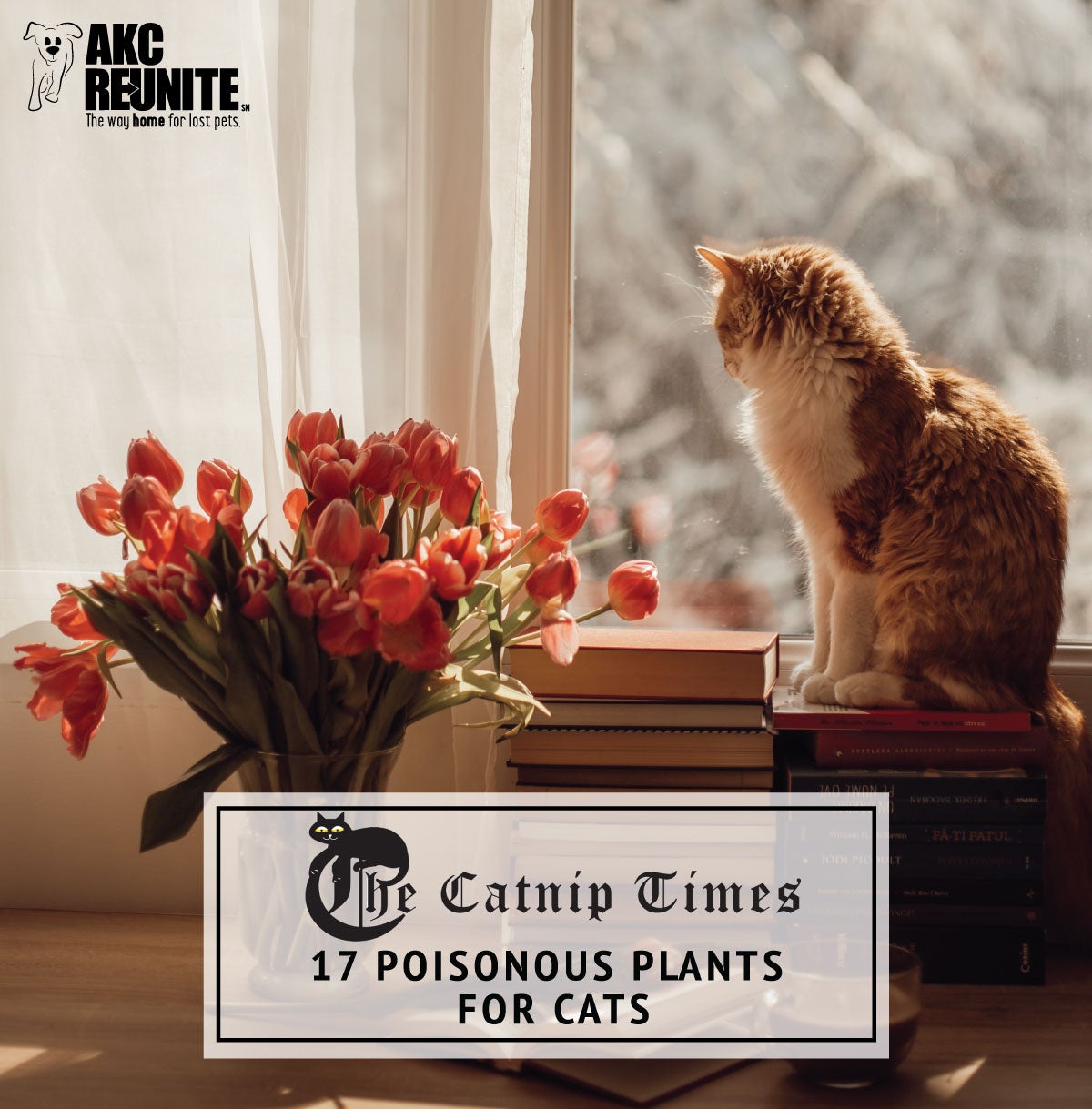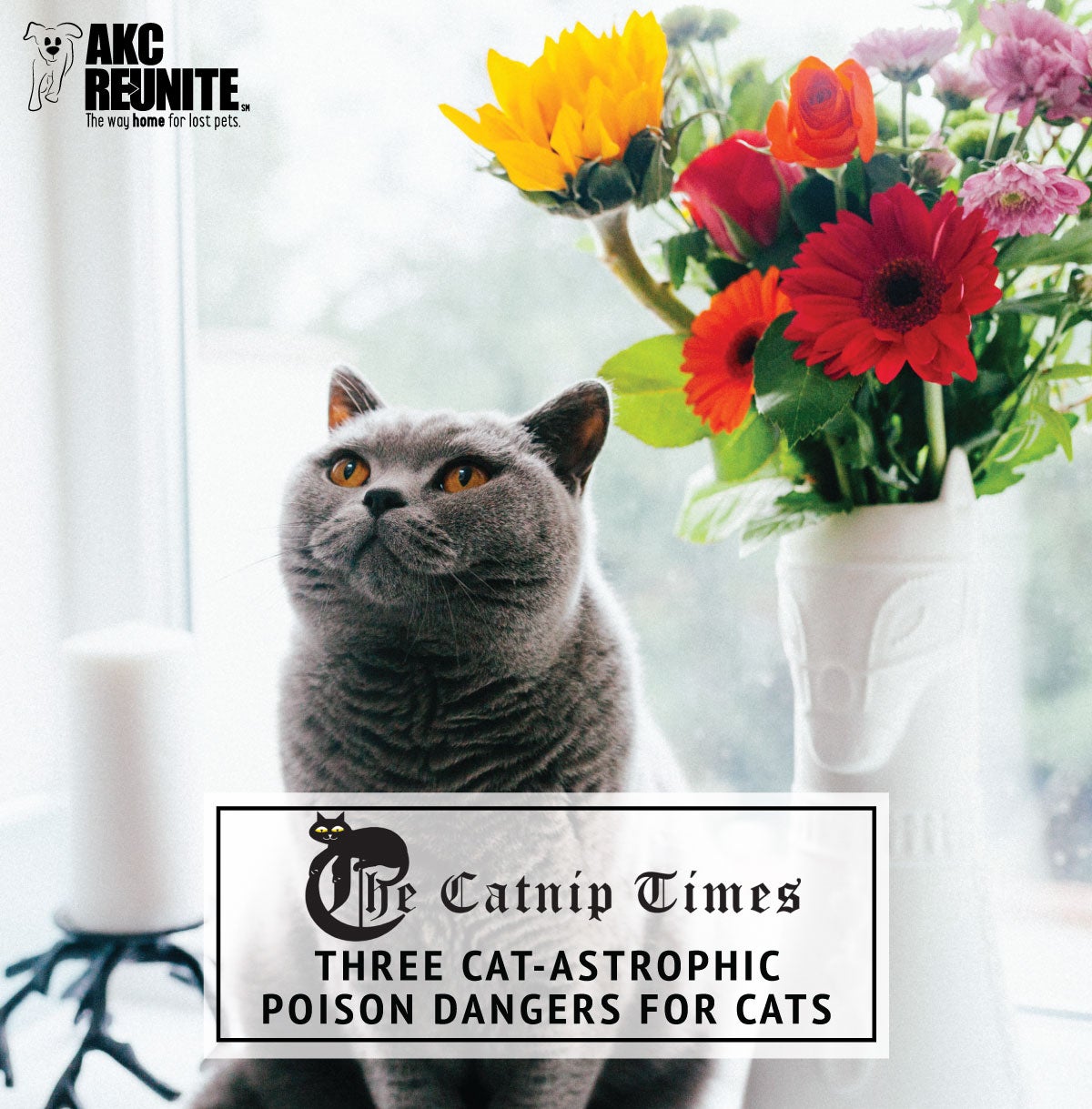PLANTS THAT ARE POISONOUS TO CATS
Did you know there are 17 plants that are dangerous for felines?! Make sure to keep these toxic plants away from your cat!
Lilies
- Members of the Lilium spp. are considered to be highly toxic to cats. While the poisonous component has not yet been identified, it is clear that with even ingestions of very small amounts of the plant, severe kidney damage could result.
Marijuana
- Poisonous component has not yet been identified, it is clear that with even ingestions of very small amounts of the plant, severe kidney damage could result. Ingestion of Cannabis sativa by companion animals can result in depression of the central nervous system and incoordination, as well as vomiting, diarrhea, drooling, increased heart rate, and even seizures and coma.
Sago Palm
- All parts of Cycas Revoluta are poisonous, but the seeds or “nuts” contain the largest amount of toxin. The ingestion of just one or two seeds can result in very serious effects, which include vomiting, diarrhea, depression, seizures and liver failure.
Tulip/Narcissus bulbs
- The bulb portions of Tulipa/Narcissus spp. contain toxins that can cause intense gastrointestinal irritation, drooling, loss of appetite, depression of the central nervous system, convulsions and cardiac abnormalities.
Azalea/Rhododendron
- Members of the Rhododenron spp. contain substances known as grayantoxins, which can produce vomiting, drooling, diarrhea, weakness and depression of the central nervous system in animals. Severe azalea poisoning could ultimately lead to coma and death from cardiovascular collapse.
Oleander
- All parts of Nerium oleander are considered to be toxic, as they contain cardiac glycosides that have the potential to cause serious effects—including gastrointestinal tract irritation, abnormal heart function, hypothermia and even death.
Castor Bean
- The poisonous principle in Ricinus communis is ricin, a highly toxic protein that can produce severe abdominal pain, drooling, vomiting, diarrhea, excessive thirst, weakness and loss of appetite. Severe cases of poisoning can result in dehydration, muscle twitching, tremors, seizures, coma and death.
Cyclamen
- Cylamen species contain cyclamine, but the highest concentration of this toxic component is typically located in the root portion of the plant. If consumed, Cylamen can produce significant gastrointestinal irritation, including intense vomiting. Fatalities have also been reported in some cases.
Kalanchoe
- This plant contains components that can produce gastrointestinal irritation, as well as those that are toxic to the heart, and can seriously affect cardiac rhythm and rate.
Yew
- Taxus spp. contains a toxic component known as taxine, which causes central nervous system effects such as trembling, incoordination, and difficulty breathing. It can also cause significant gastrointestinal irritation and cardiac failure, which can result in death.
Amaryllis
- Common garden plants popular around Easter, Amaryllis species contain toxins that can cause vomiting, depression, diarrhea, abdominal pain, hypersalivation, anorexia and tremors.
Autumn Crocus
- Ingestion of Colchicum autumnale by pets can result in oral irritation, bloody vomiting, diarrhea, shock, multi-organ damage and bone marrow suppression.
Chrysanthemum
- These popular blooms are part of the Compositae family, which contain pyrethrins that may produce gastrointestinal upset, including drooling, vomiting and diarrhea, if eaten. In certain cases depression and loss of coordination may also develop if enough of any part of the plant is consumed.
English Ivy
- Also called branching ivy, glacier ivy, needlepoint ivy, sweetheart ivy and California ivy,Hedera helix contains triterpenoid saponins that, should pets ingest, can result in vomiting, abdominal pain, hypersalivation and diarrhea.
Peace Lily (AKA Mauna Loa Peace Lily)
- Spathiphyllum contains calcium oxalate crystals that can cause oral irritation, excessive drooling, vomiting, difficulty in swallowing and intense burning and irritation of the mouth, lips and tongue in pets who ingest.
Pothos
- Pothos (both Scindapsus and Epipremnum) belongs to the Araceae family. If chewed or ingested, this popular household plant can cause significant mechanical irritation and swelling of the oral tissues and other parts of the gastrointestinal tract.
Schefflera
- Schefflera and Brassaia actinophylla contain calcium oxalate crystals that can cause oral irritation, excessive drooling, vomiting, difficulty in swallowing and intense burning and irritation of the mouth, lips and tongue in pets who ingest.
If you notice any of these unusual signs or symptoms in your cat, take them to the vet immediately!
RELATED POSTS
Why Does My Cat Groom Itself
Does your cat lick itself constantly and have patches of fur missing or hair loss? If so, your cat might be grooming excessively. Here we'll discuss how to spot signs of excessive grooming, what might be causing it, and how to stop.
Three CAT-Astrophic Poison Dangers for Cats!
Did you know even the water from a popular Easter Lily’s flower’s vase can be dangerous to your favorite feline? But that’s not all! Not only are these items dangerous to cats, but the costs associated with veterinary care should they encounter any of these items can be expensive for owners.
Theories on Why Cats Rub Their Heads
Does your cat rub his or her face on things? It may seem like a strange behavior, but it turns out there may be an explanation behind it!






